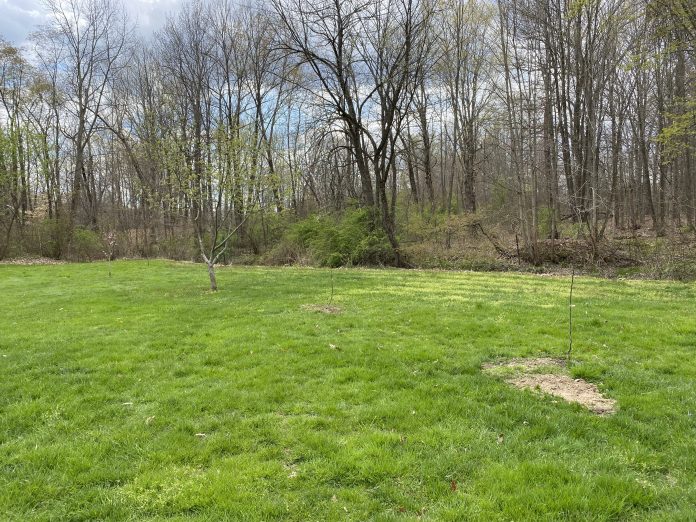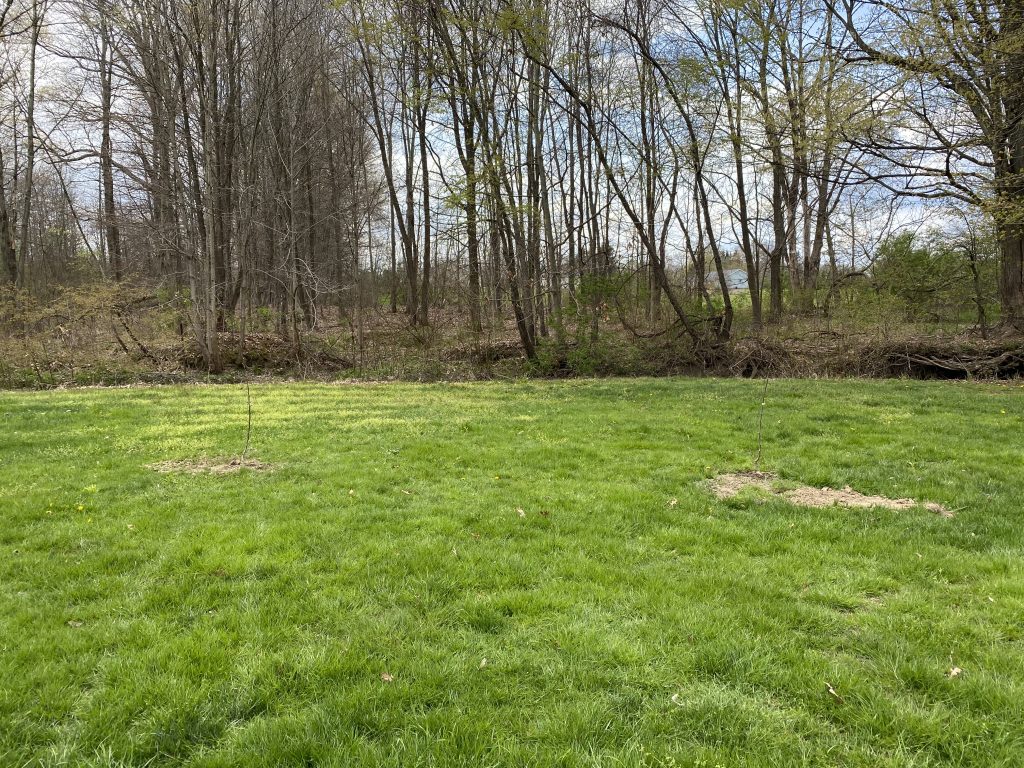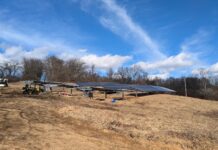
This week’s gardening project was planting pear trees. Mom already has an apple tree and peach tree and she wanted to add a pear tree for her birthday — happy birthday, mom.
It’s ironic she has so many fruit trees and we haven’t harvested more than a very tart apple a couple of years ago. However, the peach tree was just planted last year, came back healthy and filled out with blossoms and should be productive in two to three years. And the apple tree produces apples, we just can’t compete with the squirrels, who will eat them before they are even ripe.
I think to my mom the row of fruit trees is more about nostalgia than annual fruit production. My grandparents had a small hobby farm when I was young — a large garden, 20-30 head of cattle, a few sectioned paddocks of grazing pasture, a hayfield, a couple of crop fields, a chicken coop, a large vegetable garden, a stocked pond and a small orchard. Since the farm sold and my grandma passed away in 2019, my parents have focused a lot more on completing projects on their property and adding elements to turn in into a place their grandchildren will enjoy through childhood and remember into adulthood.
The most recent addition was a pair of pear trees because they have to be planted in pairs to produce fruit.
Growing requirements
Pears are a relative of apples that originated in central Asia. Not all varieties may be suited to your backyard, depending on the local climate. But hardier varieties have been developed to grow in colder climates. Mom chose a red Anjou pear tree and a Shenandoah pear tree. There are other cold-hardy varieties to grow in Ohio. You can find more options by contacting your local nursery or by checking the USDA growing zone of the tree online before purchasing.
As a relative of apple trees, pear trees have similar planting and care requirements.
Soil pH. Pears grow best in slightly acidic soils with a pH ranging from 6 to 7. Before planting your tree, you should consider doing a soil test to determine the pH of your soil and amending it to meet the needs of your pear trees. Because we have an apple tree successfully growing 15 feet away from where we planted to the first pear tree and 30 feet from the second, we’re confident our soil pH will meet the needs of the new trees.
Drainage. Pear trees prefer well-drained soil where water does not stand for long after it rains. We planted our trees in an area with a natural mixture of clay and sand soils and backfilled each hole with the soil from the buckets the trees came in from the nursery.
Choose a sunny location. Plant your pear trees in a sunny location to maximize fruit production. Additionally, make sure the area offers good air circulation. Locations away from other trees and large structures are ideal.
Ensuring pollination for fruit production. You have to plant at least two varieties of pear trees, to ensure cross-pollination and fruit production. The trees should be spaced 15-20 feet apart when planted. Lastly, make sure the varieties you choose are compatible with each other.
Planting pear trees

After you’ve met all the growing requirements, you’re ready to plant your pear trees. Pear trees should be planted during the spring in a location that meets all of the above needs.
Dig a hole no deeper than each tree’s root ball and about twice as wide. Mix in compost and peat moss or other organic matter with the soil you removed from the hole so that it makes up about 30% of what’s being backfilled. Before you backfill the hole be sure roots are straightened out rather than bent, in a circle or ‘J’ shape. Also, make sure the tree is straight. It may take two people — one to hold the tree and one to backfill. When you backfill the hole make sure the soil reaches the same spot on the trunk as it did when the tree was in its container. The graft union — the swollen area where the trunk meets the rootstock. As you backfill, remove air pockets as you fill in with dirt. Once the hole is completely filled, tamp the surface dirt down gently and water the tree thoroughly. If the soil settles, add soil later to ensure it’s at the appropriate level.
Producing Fruit
It will take 4-6 years for your pear trees to produce fruit. However, meeting all your tree’s growing requirements from the start will improve your yields in the future. After planting perform regular spring pruning and periodically check soil quality to ensure optimal growth and eventual fruit production.
















Well written article. Pear trees are beautiful and produce nutritious healthy fruit, but unfortunately, Ohio put the pear trees on the invasive species list in January 2018. Please read more about this at:
http://www.westlakebayvillageobserver.com/read/2021/04/20/chop-down-that-tree
Lee,
Only the Callery pear is a banned pear tree species and that ban isn’t effective until Jan. 7, 2023. Other pear tree varieties are fine to plant and safe for local ecosystems. You can find a full list of banned invasive plant varieties in Ohio here — https://www.oipc.info/invasive-plants-banned-on-ohio.html
Thanks for reading and offering feedback!
Have two from Walmart as I recall sunburst etc. I wonder if I’ll get fruit? They’ve double last two ng seasons so far . Ones 15. Other is 12 feet. Male, female idk?? Love pears ! Big one had small pears this fall it developed flower and set three pears but no good .
ng seasons so far . Ones 15. Other is 12 feet. Male, female idk?? Love pears ! Big one had small pears this fall it developed flower and set three pears but no good .